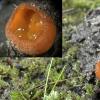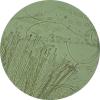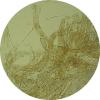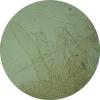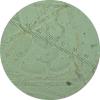
19-11-2025 23:21
 carl van den broeck
carl van den broeck
Dear guestIn Waardamme, Belgium, I found dozens of

19-11-2025 20:51
 Andreas Millinger
Andreas Millinger
Good evening,found this species on a felled trunk

19-11-2025 13:04
 Bruno Coué
Bruno Coué
Bonjour,je sollicite votre avis pour la récote

17-11-2025 21:46
Philippe PELLICIERBonjour,Récolté sur bois pourrissant de feuillu

16-11-2025 21:09
 Robin Isaksson
Robin Isaksson
Anyone recognize this acc. to pictures.? Found on

18-11-2025 13:59
Nogueira HéctorNovember 14, 2025 Brazuelo (León) SPAIN Hymenosc

17-11-2025 19:14
herman lambertApothécie discoïde 0.6 cm diam., orangeFace hym�

17-11-2025 21:57
Philippe PELLICIERBonjour,Récolté sur bois de feuillu mort dur, no

14-11-2025 16:26
 Marian Jagers
Marian Jagers
Hello everyone, On dead wood of Cytisus scoparius
Tricharina gilva?
Piet BORMANS,
28-11-2009 18:53
 Bonjour,
Bonjour,Pourrait-il s'agir de Tricharina gilva?
Trouvé le 24/11/09 sur un sol sablonneux pauvre en terre végétale, isolé.
Apothécies: 9mm, Ø x 5 mm, cupuliforme et de couleur orange.
Duvet blanc à l'extérieur de l'excipulum, poils bruns en touffe sur le bord supérieur, dimensions 180x225 x 10-13(19) µm, poils avec une extrémité arrondie.
Asques: 200-240 x 8-10 µm. J-
Parapfyses d'une largeur de 4µm avec un sommet élargi jusqu'a 7µm; colorant rouge-brun dans Melzer
Spores lisses, 15-16 x 8-9 µm
Merci d'avance.
Piet Bormans
Gilbert MOYNE,
28-11-2009 23:14
Re:Tricharina gilva?
Les poils sont assez surprenants pour un Tricharina.
Et la couleur aussi.
Peut-être T. fibrillosa mais je crois que l'espèce a émigré dans un autre genre.
Gilbert
Et la couleur aussi.
Peut-être T. fibrillosa mais je crois que l'espèce a émigré dans un autre genre.
Gilbert
Richard Korf,
29-11-2009 04:29
Re:Tricharina gilva?
Yes, Moravec transferred that species. to Pseudaleuria. I haven't seen any molecular evidence that the transfer was necessary, though the Index Fungorum accepts it. The spores and the imperfect state fit Tricharina. Yang and Korf credited the epithet to Currey, but Currey's name in Peziza is a later homonym, and the correct authorities change to Tricharina fibrillosa (Massee) Chin S. Yang & Korf (Art. 58, ICBN).
NO, I made an error. We never did get spores of T. fibrillosa to germinate, and had no recent collections, so there is no known Ascorhizoctonia state for this species. Would be nice to get this in culture and get it deposited in a reputable culture collection. We discovered that even old (±20 year) dried specimens have ascospores that can be germinated, so even if you've dried your collection you can probably get the spores to germinate! If it doesn't produce an Ascorhizoctonia state then maybe Moravec is correct!
Dick Korf
NO, I made an error. We never did get spores of T. fibrillosa to germinate, and had no recent collections, so there is no known Ascorhizoctonia state for this species. Would be nice to get this in culture and get it deposited in a reputable culture collection. We discovered that even old (±20 year) dried specimens have ascospores that can be germinated, so even if you've dried your collection you can probably get the spores to germinate! If it doesn't produce an Ascorhizoctonia state then maybe Moravec is correct!
Dick Korf
Piet BORMANS,
01-12-2009 21:50

Re:Tricharina gilva?
Merci beaucoup à Gilbert Moyne de votre réponse, and a lot of thanks to Richard Korf for the explanation.
Piet Bormans
Piet Bormans

